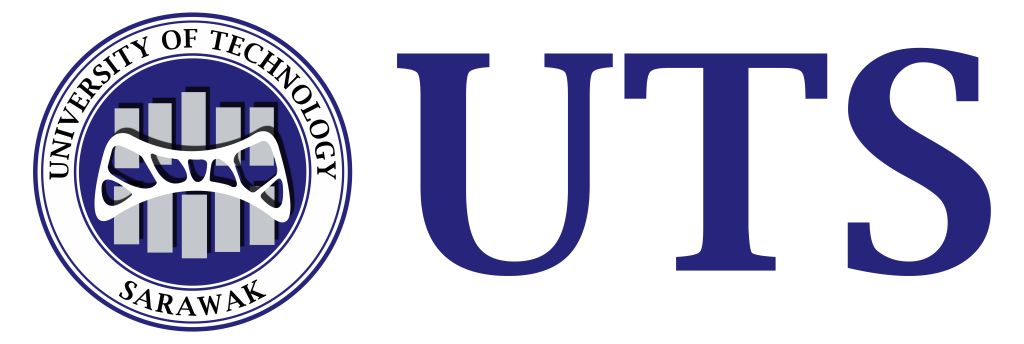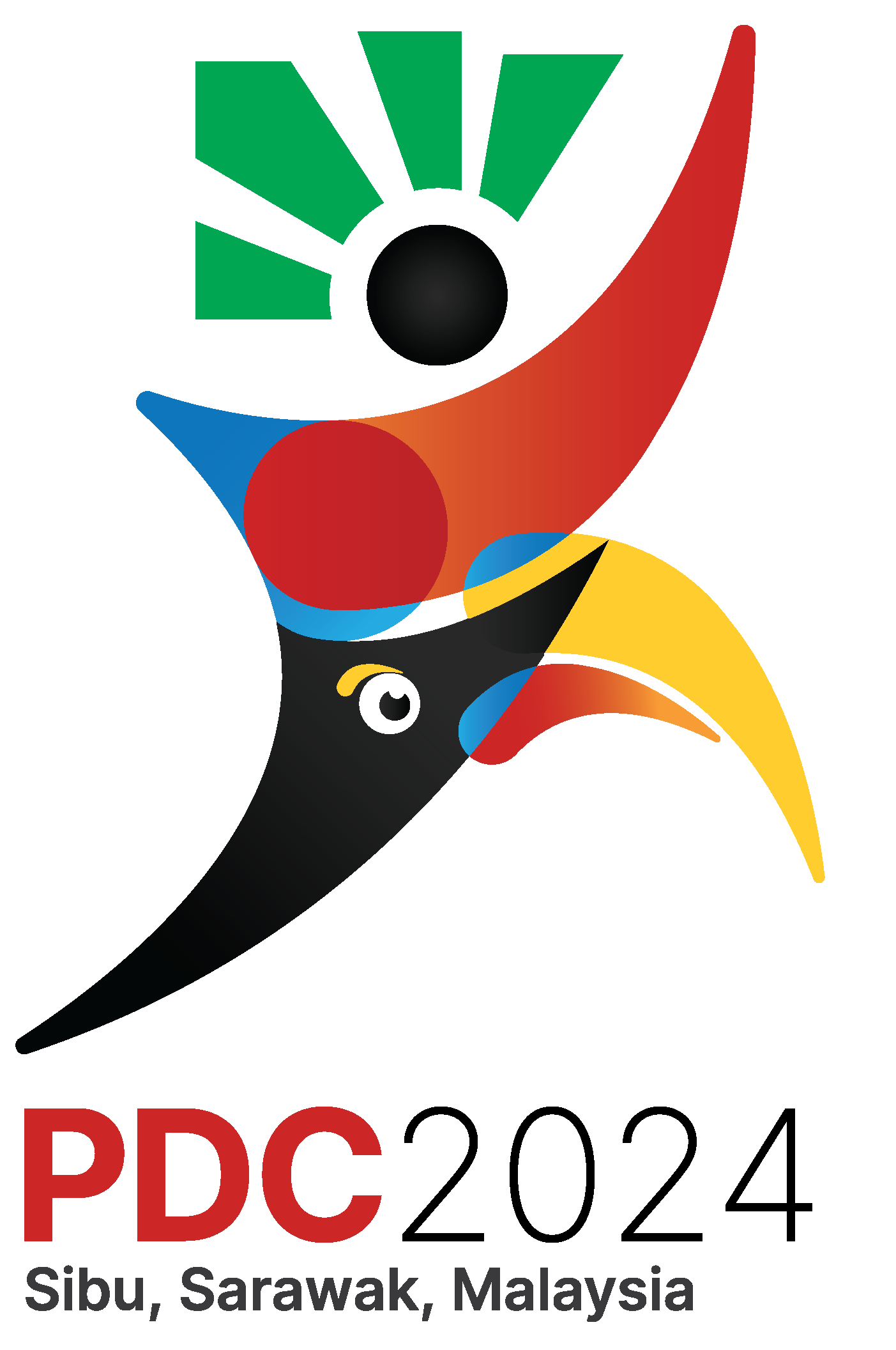

Accepted Situated Action and Exhibition
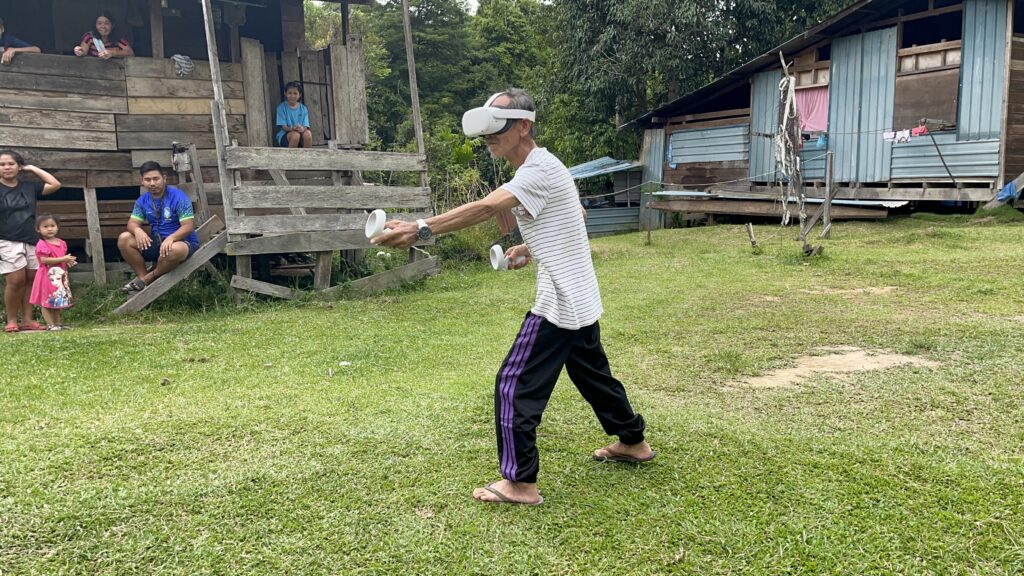
1. IMVR: Immersive Molong in virtual reality
Tariq Zaman, Naqib Izzuddin Bin Hussien, Bram Kreuger, Paulina Michnowska, Diana Azlyn William
The exhibition showcases an innovative collaboration with the Penan community in Malaysia, unveiling the Immersive Molong VR (IMVR) application. Rooted in the indigenous concept of Molong, this virtual experience allows users to establish a profound connection with the natural world, reflecting Penan principles of harmony with nature and sustainable resource utilization. Users can engage with a virtual companion known as Olong, transforming themselves to explore the world from the Olong’s perspective
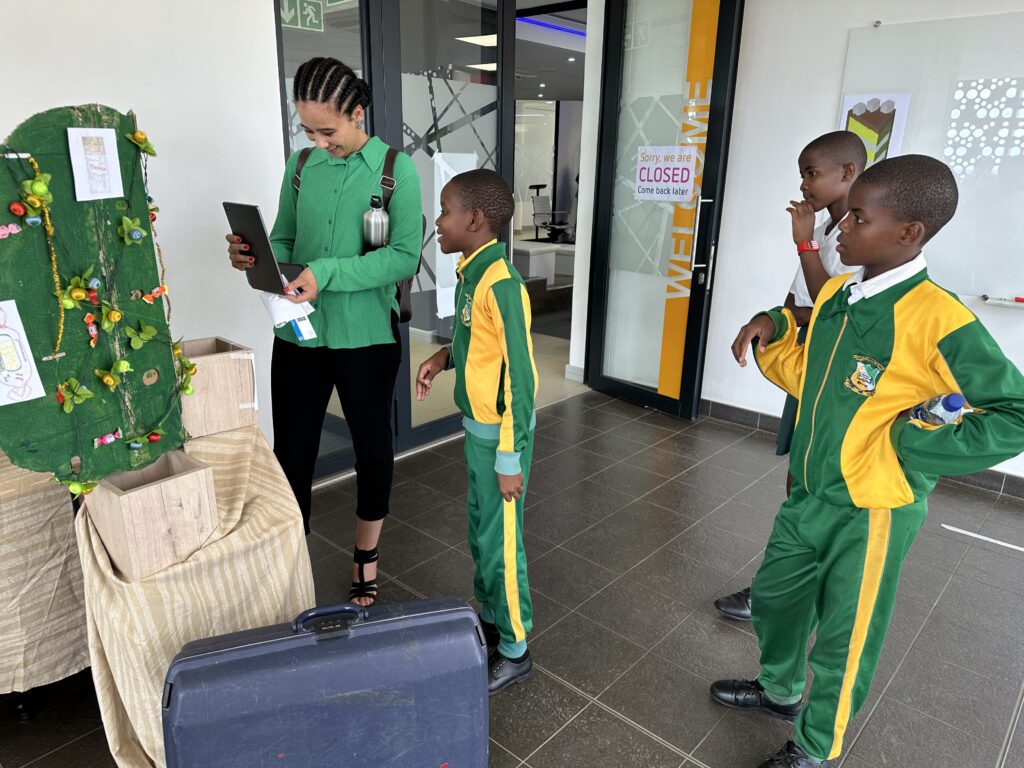
2. A dynamically evolving multicultural escape suitcase travelling a participatory journey
Katja Becker, Heike Winschiers-Theophilus, Donovan Maasz, Selma Auala, Helvi Itenge, Joseph-David Isaacs, Kaulyaalalwa Peter, Naska Goagoses
Escape rooms, popular around the world, offer entertainment, team building and learning. They promote intercultural encounters and mutual learning. Our mobile escape room in a suitcase concept builds on this, evolving with each journey. In Sibu, Malaysia, an AR-equipped suitcase arrives filled with Namibian puzzles. Visitors solve these to unlock goodies and materials for new puzzles. They create cultural puzzles, upload them to the AR app and contribute to a multicultural escape experience. These puzzles can be played anywhere, ensuring the suitcase evolves as it travels.
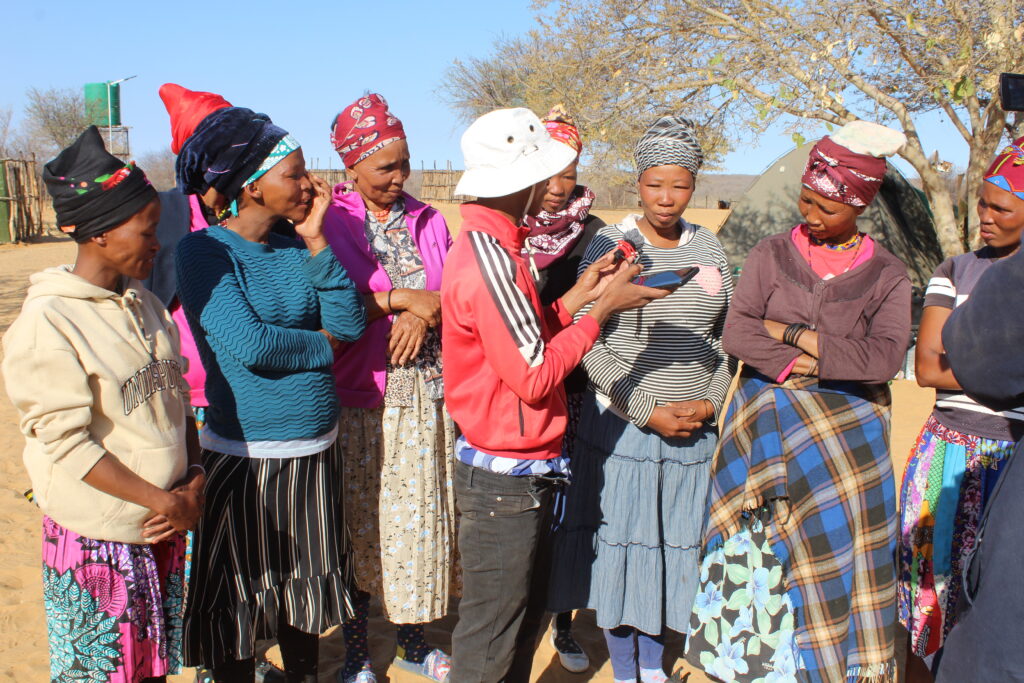
3. Community podcast and soundscape creation on issues that matter to indigenous people across the globe
Katja Becker, Shorty Kandjengo, Peter Kaulbach, Donovan Maasz, Selma Auala, Joseph-David Isaacs, Heike Winschiers-Theophilus
Indigenous people around the world are often excluded from decisions that affect them. We advocate their inclusion in order to promote global dialogue. Our concept involves recording conversations with indigenous people and creating sound installations to amplify their voices. This initiative aims to raise awareness and encourage action on indigenous issues in all countries.

4. Mending beyond fabric at Rafooghar: Participatory design for emotional repair, restoration, and resistance
Rubina Singh, Pooja Dhingra
Hope Quilt or Ummeed ka Karavaan invites PDC 2024 participants to engage in the healing and dreaming potential of stitching as a participatory design tool. In the interactive session, participants will co-design a quilt of healing and hope after a process of emotional mapping and self-reflection. The resulting Hope Quilt will be a tangible representation of collective dreaming, exhibited both physically and digitally. The situated action builds on participatory design processes led in Rafooghar, a collaborative space for repair, restoration and resistance co-designed with marginalized communities in South East Delhi where they come together to stitch stories from their lives. Some of art works created in Rafooghar will be exhibited and the Hope Quilt session will be co-led by community co-designers from Rafooghar.
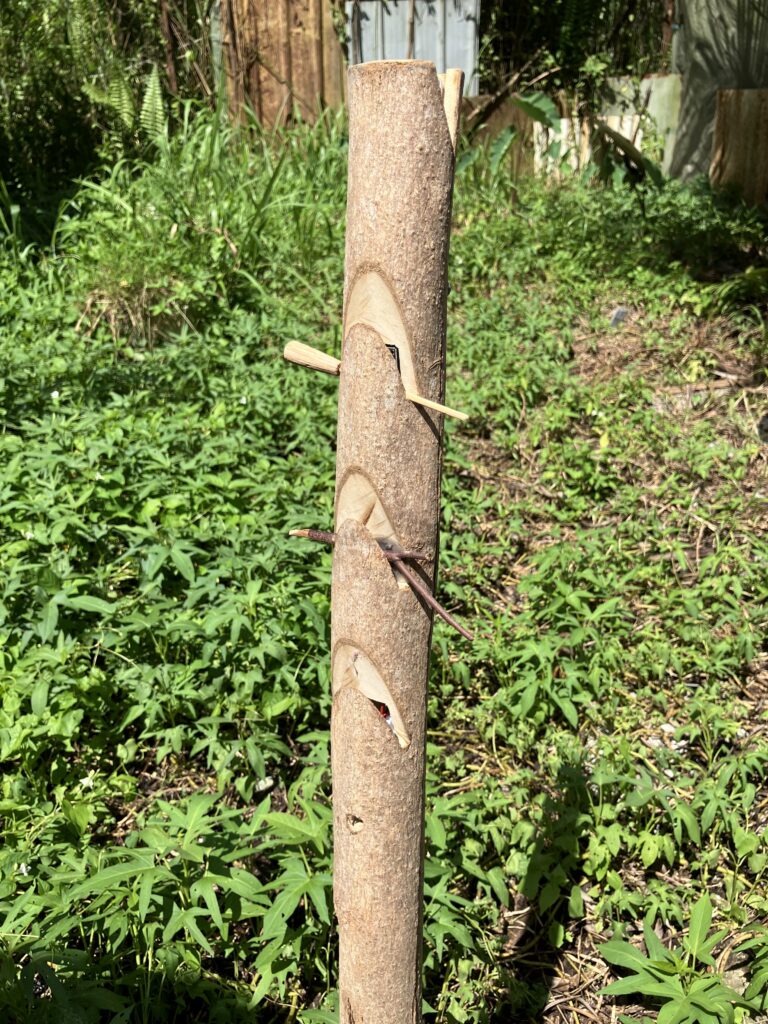
5. Interactive Batang Oroo: A multisensory tool for experiencing Oroo’ language
Kah Soon Liew, Tariq Zaman, Diana Azlyn William
Grab a chance to experience Oroo, a unique and historical sign language from the Penan community of Sarawak. We have designed and developed the Interactive Batang Oroo (IBO), featuring a cutting-edge Tangible User Interface (TUI), inviting you to embark on a journey of discovery. Through this innovative interface, you’ll engage with the IBO to uncover the meanings behind 39 beautifully crafted signs. The IBO is designed to stimulate your senses which including kinesthetic, haptic, and visual—ensuring an immersive experience that brings the Oroo language to PDC2024 without requiring a trek into the wild. Each sign tells a story, and through our technology, you’ll learn not just the semantic meaning, but also the scenarios in which each sign is appropriate. Join us and be part of preserving and experiencing the Penan culture.

6. Digital Diabolo – a VR intangible cultural heritage game based on participatory design
Cuiting Kong
The exhibition showcases the “Digital Diabolo” VR game, a collaborative creation with the Beijing Diabolo Intangible Cultural Heritage Inheritor Community. Diabolo is a traditional folk sport in China with a rich history spanning at least 900 years. In this immersive VR experience, users are transported to a Beijing Siheyuan (Courtyard House) where they can virtually play diabolo. They also gain insight into the intricate craftsmanship and structural design of the traditional diabolo, delve into its cultural significance, and deepen their appreciation for traditional Chinese culture.
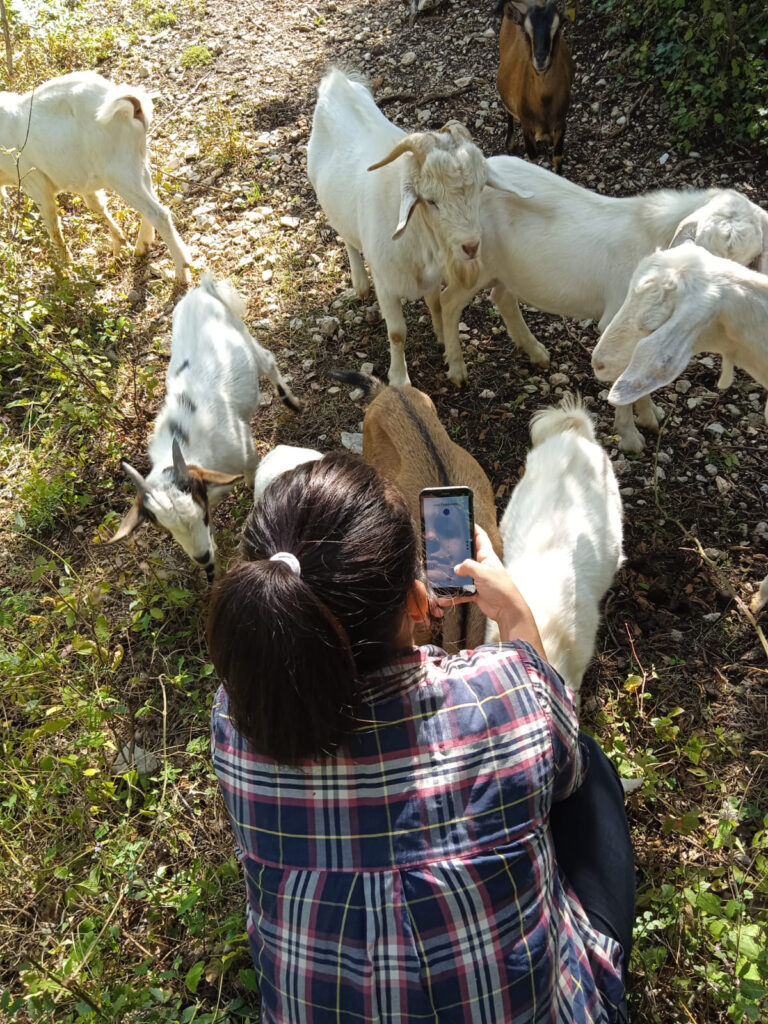
7. Retracing ecological relationships: Paving the way in Malaysia
Laura Boffi
The situated action aims to engage with traditional farmers and shepherds of the Sarawak region and prompts them to retrace their ecological relationships with the environment and with the more-than-humans with whom they share their territory. Since the project has been going on for two years and other communities in Europe got involved, during the conference the Malesyan participants will be first invited to go through the exhibition showing the work previously done in Italy, with a sheep shepherd, and in Finland, with reindeers herders. Then, they will be actively engaged in reflecting on their ecological relationships through the use of the tangible wooden tool called the “Entanglement tool” and the “Ecological relationships” smartphone app. The aim of the situated action is to untangle how biodiversity and agropastoral contexts are intertwined, to learn how/if biodiversity preservation is embedded in farming practices, and to uncover opportunities to support or update specific relationships.

8. Storytelling with the Penan people in Borneo. Situated participatory action through a multi-site community mural
Paulina Kamila Michnowska, Tariq Zaman
During this participatory action we will showcase and discuss a collaborative mural painted with the community of Penan of Long Lamai village. This within the wider context of exploring topics around the preservation of cultural heritage and identity. The first activity will illustrate and explain the process, the themes, and stages of production of the mural. We will showcase images, videos, and physical artefacts such as natural dyes samples and their ethnobotanical sources. The presentation will follow a fifteen-minute workshop, where the participant will be invited to test the natural dyes by making their own drawings. We will end the workshop with a fifteen-minute Q&A. This will be an opportunity to discuss the content of the drawings and reflect on the topics such as the loss of heritage in different cultural settings.

9. Enhancing Collaboration in the Digital Sector: Testing Commercialization Tools and MVP Identification for Researchers and University Spin-Offs in Sarawak
Nur Hartini Mardan, Khairul Hafiz Sharkawi, Antionette Goh Wei Ting, Errna Natasha Ramazi, Janahtul Farha Mehboob Khan
Discover the power of research commercialization in Sarawak-based universities, where economic growth and innovation thrive in Malaysia’s digital landscape. By utilizing frameworks like the Business Model Canvas, Value Proposition Canvas and KTH Innovation Readiness Level, we systematically evaluate innovations and market opportunities, fostering communication with industry stakeholders.Through collaborative efforts and knowledge exchange, we drive entrepreneurship and innovation in Sarawak’s digital ecosystem.
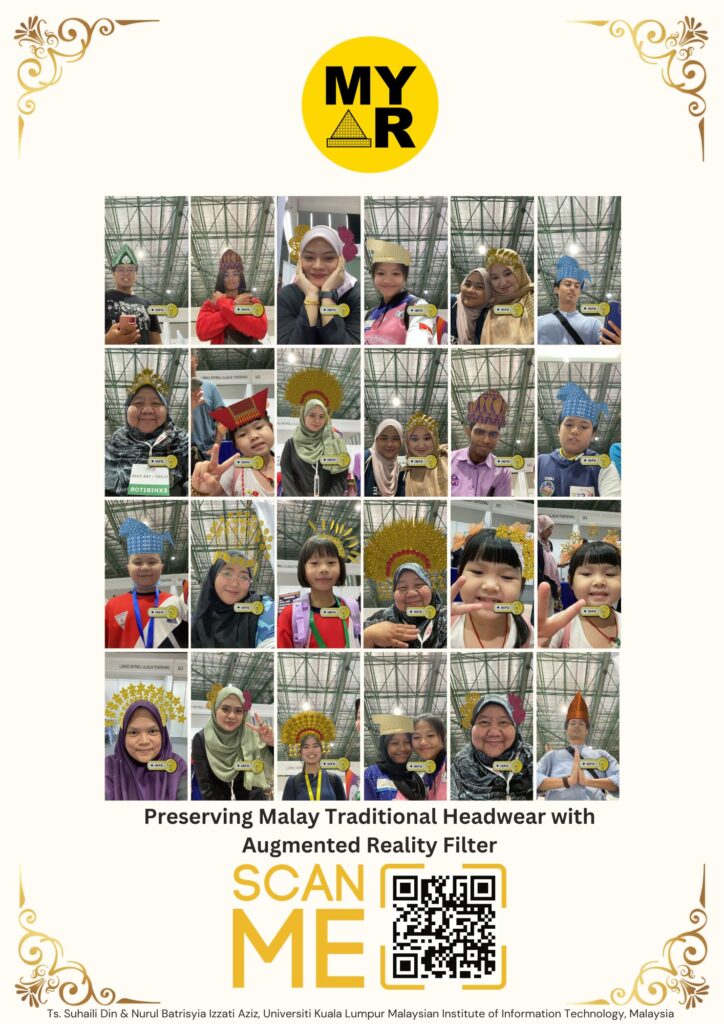
10. MYAR: Preserving Malay traditional headwear with augmented reality filter
Suhaili Din, Nurul Batrisyia Izzati Aziz
The focus of this project is to create a Malay traditional headwear filter to expose social media users to Malay traditional headwear. The usage of Augmented Reality (AR) aims to enable the visualization and simulation of complicated data, concepts, and scenarios. The AR Filter was developed using Meta Spark Studio. Traditional headwear has become a significant symbol and character of Malaysia’s Malay people. It also represents the rich cultural heritage and traditions of the Malay community. The objectives of the research are to develop the AR filter as a platform to promote Malay headwear and evaluate the effectiveness of the AR as a platform for raising awareness, preserving, and promoting cultural heritage. ADDIE model was used as the research methodology for managing the project. Adobe Illustrator (AI), 3D Blender, and Meta Spark Studio were used to develop the filters. The Malay AR traditional headwear filters were implemented to the audience via Instagram and Facebook. Tested to 120 respondents of various ages and the findings were that 29.2% didn’t have any knowledge about Malay Traditional headwear and 96.7% got new knowledge after using the filter.
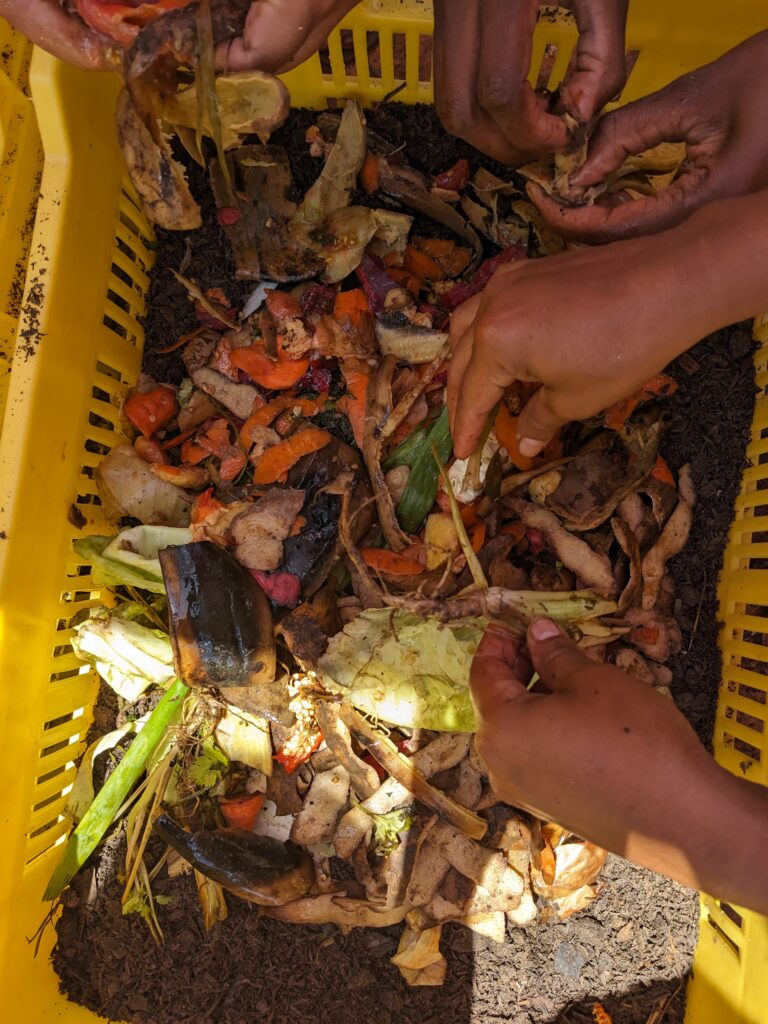
11. Trust your gut: An edible exploration of Participatory Design language
Josymar Rodríguez Alfonzo, Liesbeth Huybrechts
Grounded in Participatory Design (PD)’s evolving embrace of relational and processual approaches, this research project explores how the acts of cooking, eating, and digesting together can inform and shape terms, concepts—and, by extension, practices in the realm of PD. Understanding the intersection of bodily experiences and language is crucial in ‘thickening’ our ways of doing PD. To this end, Trust Your Gut! will engage participants’ bodies in an interactive moment for collectively smashing, massaging, crushing, squishing, chewing, gulping and devouring materials and meanings. With the intention to develop a sensory-rich glossary, participants will explore the interplay between personal satisfaction, communal experiences, and materiality within their practices. In this situated action, we will explore thinking with our guts to make PD ‘thicker’ by adding layers of engagement, sensuous and dirtier layers, reaching out from within, and connecting through what makes us all human.

12. Identifying the affordances of The Library of Engagements
Emily Crompton
The ‘Library of Engagements’ is a haphazard, incomplete and continuously evolving collection of participatory design methods. Based on the humble conversation, the librarian has a desire to categorise, share and disseminate methods of engagement as widely as possible. This piece of work aims to celebrate community participation and public consultation in all its messy, risky and complex beauty. The ‘Library of Engagements’ is once again open, but in need of your help. Due to geographical restrictions of the Librarian, and of the current format, the Library lacks examples of Engagement activities happening outside Europe. This Situated Action will invite individuals, groups and organisations to meet with the Librarian to contribute and expand the collection. Emily (the librarian) is an architect and urban designer with a desire to involve as many people as possible in the design of spaces, buildings, neighbourhoods and cities. She would love to hear examples and stories of engagement methods especially from Sibu, Sarawak, Malaysia. Please get in touch if you want to contribute to The Library of Engagements – anyone and everyone is welcome to contribute: e.crompton@mmu.ac.uk

13. Pluriverse design – meet your buddy through scents
Yulu Zhang
The project explores “Pluriverse design” as a means to address social justice issues through embodied interaction design. The project emphasizes co-creation and multicultural contexts, aiming to inspire future work in this field. Through co-design methods and prototype development, the design outcome highlights the importance of reorienting user focus and embracing cultural diversity. Co-design workshops with participants from diverse background led to the identification of design opportunities such as unboxing cultural stereotypes in social interactions. Utilizing scents and digital interactions, the prototype aims to facilitate mindful interactions between individuals from different nationalities. The iterative process of prototype development revealed challenges in avoiding cultural stereotypes and ensuring consistency. Overall, the project underscores the complexities of co-design and advocates for more inclusive design practices. (Image @UHasselt/Constructlab, One of the case studies presented in the book, on Participatory Design with water, De Andere Markt, Belgium)

14. Assembling indigenous climate observatories – local knowledge for local Action
Lizette Reitsma, Diana Azlyn William, Meshack N. Dludlu, Gugu Sibandze, Molibeli Taele, Charles Tseole, Tariq Zaman
Indigenous communities are amongst the most vulnerable to the impacts of climate change, yet their ways of knowing are often excluded from climate research and policymaking. It is therefore that we focused in the project Indigenous Climate Change Observatories – Local Knowledge for Local Action, on the question: How can we learn together to better understand local climate change?
We shaped observatories with seven Indigenous communities centred around local issues and needs: Two in Borneo, Malaysia (focused on connections to the river/forest), three in Eswatini (focused on biodiversity), and two in Lesotho (focused on weather patterns). Each of the Indigenous Climate Observatories manifested uniquely, bringing together the communities, their concerns, and their interactions with the local researchers change, thereby morphing into something unique. As a red thread through the project, we have made use of stamped blankets, as initial meeting spaces. Therefore, we tell the project’s story through those blankets.

Photo credit to Anelisa Mcoli
15. Ocean relationalities: Exploring ocean connections through the lens of augmented reality and photostories
Marly Muudeni Samuel, Mia Strand
Ocean relationalities invites PDC delegates to engage in a situated action that explores ocean connections. This situated action presents augmented reality and photostories that express and convey various ocean connections, histories and relationships related to identities, customs, spirituality, wellbeing, and cultural heritage in Namibia and South Africa. These stories are shared by knowledge holders from coastal communities in Swakopmund and Walvis Bay (Namibia), Algoa Bay and Mandeni (South Africa), and were developed through and during collaborative workshops that employed participatory design and art-based practices. The objectives of these research projects were to promote ocean knowledge and cultural heritage preservation for posterity, and to create a safe space for communities to express their views on current ocean governance processes through storytelling. Delegates are invited to explore Ocean Relationalities by engaging with the AR application titled Efuta Letu Sida Hurib and observe the photostories to explore diverse and nuanced ocean connections and narratives. Delegates will also interact with, touch, and feel provided ocean materials such as sea sand, sea rocks, sea shells, and seawater to prompt and share intricate ocean connections and relationships that delegates have with the ocean. Everyone is welcome to engage and contribute.

16. Pluriversal placemaking through Collage and Bricolage
Georgina Nolan, Nicola St John
This action asks participants to embark on an exploration of pluriversality and futuring, through the mediums of collage and bricolage. Tasked with crafting a conceptual ‘pluriversal place’, participants are invited to confront biases and limitations ingrained within futuring practices, thereby challenging the dominance of singular worldviews in shaping future narratives. Together, we hope to traverse temporal and spatial boundaries, and engage in both futuring and defuturing to collaboratively envision and reimagine an imaginative space/place. This experiential activity looks to explore the emerging discourse on pluriversality, seeking to bridge theoretical insights with practical applications, particularly in the domain of designing futures. As participants delve into making and dialogue, pivotal questions surface: How might we avoid perpetuating ‘one world’ paradigms of universal futures? Are pluriversal futures inherently participatory? How can pluriversal futures be not only envisioned, but realised?
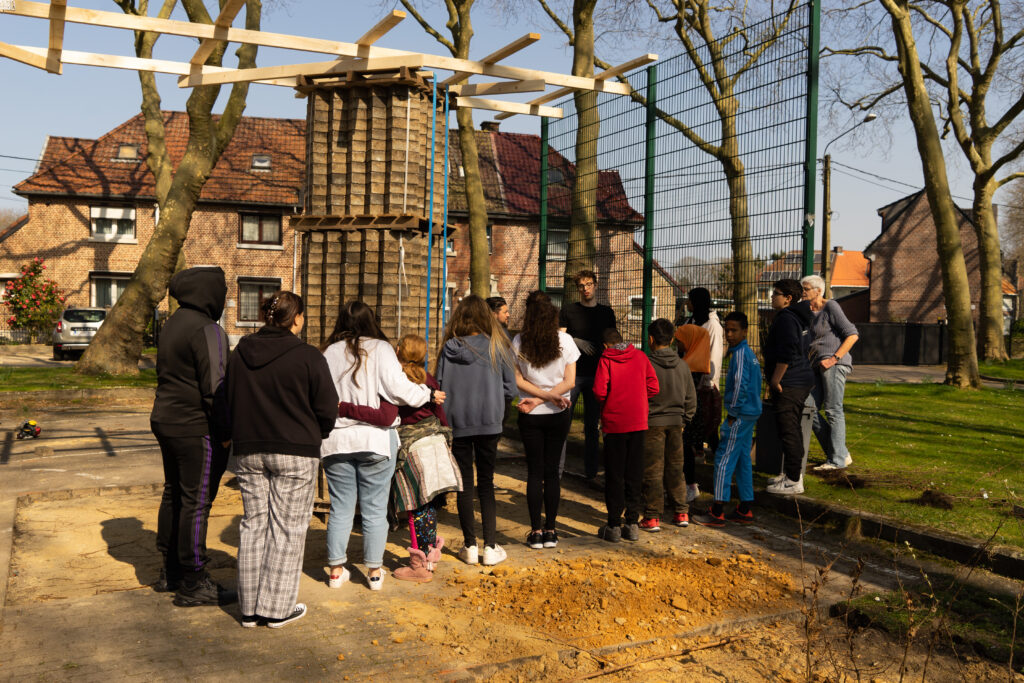
17. Participatory design in a changing world: A situated action
Liesbeth Huybrechts, Rachel Charlotte Smith, Heike Winschiers-Theophilus, Daria Loi, Jesper Simonsen,
This Situated Action is focused on an interactive discussion of central agendas in “contemporary Participatory Design in a changing world” in the form of a workshop and expo. Through an exhibition of emerging agendas in the field, content and a value map, presenting concerns and agendas from a collaborative book project, we engage participants into short discussions to re-orient values and agendas – that concretise, challenge and advance Participatory Design in a changing world of complex societal challenges.
